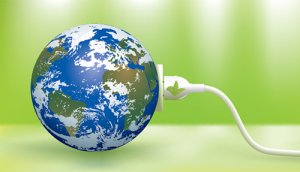 I have written about a range of emerging technologies. While the devices and apps I’ve featured were designed to accomplish very different things, they do have one thing in common—they all need power. In some cases, power limitations are holding us back from achieving even greater performance and options. What’s happening in the world of battery technology? It would be great if we could charge our devices in under a minute and the charge would last for two weeks. It would also be great if our electric vehicles could travel more than 500 miles on a single charge and recharge in only 5 minutes. How close are we to that? Read on.
I have written about a range of emerging technologies. While the devices and apps I’ve featured were designed to accomplish very different things, they do have one thing in common—they all need power. In some cases, power limitations are holding us back from achieving even greater performance and options. What’s happening in the world of battery technology? It would be great if we could charge our devices in under a minute and the charge would last for two weeks. It would also be great if our electric vehicles could travel more than 500 miles on a single charge and recharge in only 5 minutes. How close are we to that? Read on.
Basic Batteries
A battery is made up of a positive and negative electrode with an electrolyte that allows for the flow of ions between the two poles. It is possible to make a basic battery out of a copper penny (negative anode), a galvanized nail (positive cathode) and a potato or a lemon (electrolyte). Energy is created as electrons flow from the anode to the cathode through the medium. This basic technology has existed since the first electric battery was invented in 1799. The only problem was that no one had yet thought of electric cars (or cars at all for that matter) or drones or handheld devices that need batteries we wish lasted longer. The requirements for the original battery were simple in contrast.
Battery Developments
Current battery technologies have settled around alkaline, used for household tools like flashlights; lithium-ion, used in cell phones, laptops, portable tools, and even electric vehicles; and lead-acid batteries, which power the starters on gas and diesel vehicles. These all use chemicals like cobalt, lead, nickel, graphite, manganese, and aluminum that are available in limited supply on earth and can pollute the environment when disposed of. Tesla, for example, is betting on lithium-ion technology as it completes its gigafactory in Nevada. The company will produce batteries for their cars and to store energy for home solar collectors, among other uses. Tesla is betting that large-scale production and intensive research will allow to improve battery life and sustainably source or create components.
The next generation of batteries may include graphene, which was discovered in 2004. Graphene is a single-atomic layer of carbon atoms arranged in a hexagonal pattern. It is stronger than steel and diamonds and has the highest electrical and thermal conductivity ever recorded. Battery manufacturers are introducing graphene-enhanced batteries, but a full graphene battery is still in development. Companies, including Graphenano in Spain, are working to bring graphene batteries to market. One positive development is the availability of graphene filament from Graphene 3D Lab, which can be used in 3D printers (including home models) to print batteries. That could spawn a lot of new applications for the technology.
There is also active research in nanowires, which would store electrons and could be recharged more times than a traditional battery. Material scientists are searching for a substrate suitable for these fragile wires so that they can be used in a commercial product.
Thoughts
Battery technology research is marching ahead but demand for more efficient battery materials is adding pressure to speed the pace of development. Cars, electronic devices and sensors all require power that can be stored and used at the push of a button. I will be keeping my eye on new battery technology as we try to find the right blend of sustainable materials and modern efficient manufacturing.
Kelly Brown is an IT professional and assistant professor of practice for the UO Applied Information Management Master’s Degree Program. He writes about IT and business topics that keep him up at night.




